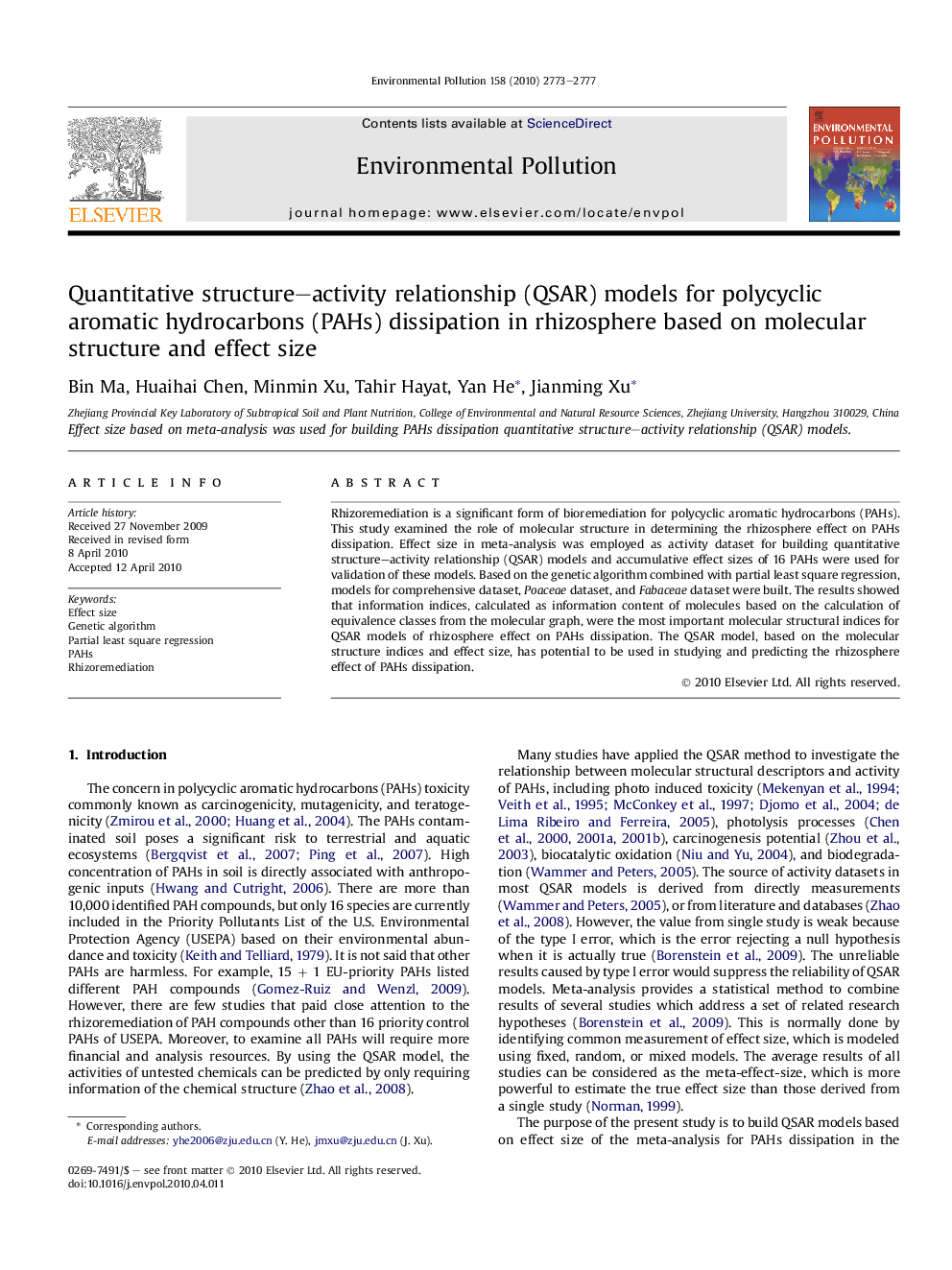| Article ID | Journal | Published Year | Pages | File Type |
|---|---|---|---|---|
| 4425177 | Environmental Pollution | 2010 | 5 Pages |
Rhizoremediation is a significant form of bioremediation for polycyclic aromatic hydrocarbons (PAHs). This study examined the role of molecular structure in determining the rhizosphere effect on PAHs dissipation. Effect size in meta-analysis was employed as activity dataset for building quantitative structure–activity relationship (QSAR) models and accumulative effect sizes of 16 PAHs were used for validation of these models. Based on the genetic algorithm combined with partial least square regression, models for comprehensive dataset, Poaceae dataset, and Fabaceae dataset were built. The results showed that information indices, calculated as information content of molecules based on the calculation of equivalence classes from the molecular graph, were the most important molecular structural indices for QSAR models of rhizosphere effect on PAHs dissipation. The QSAR model, based on the molecular structure indices and effect size, has potential to be used in studying and predicting the rhizosphere effect of PAHs dissipation.
